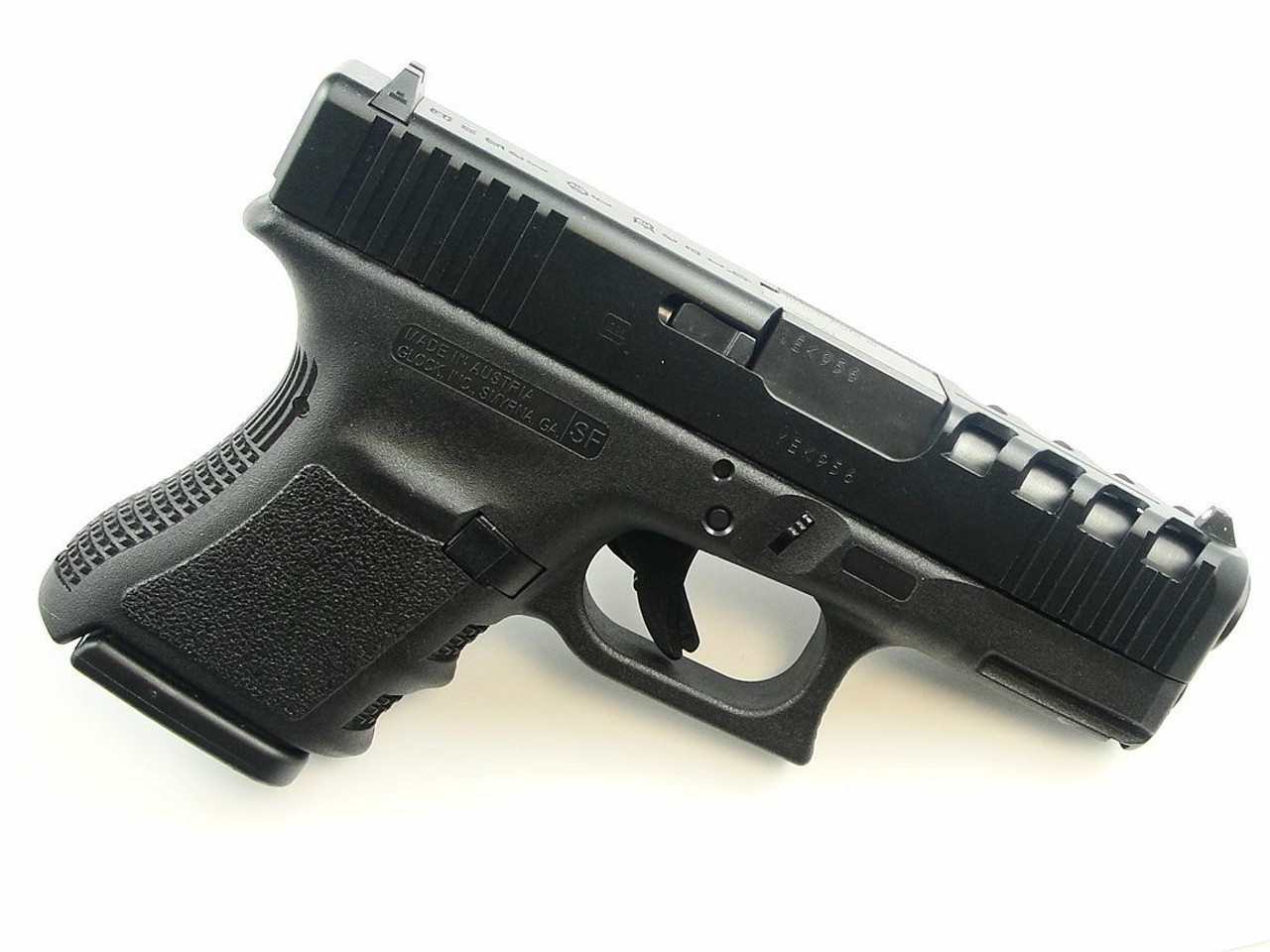Introduction: why the slide matters on a compact pistol
The choice of a Glock 43x slide can define the character of a concealed-carry pistol. For many owners the slide is the first place they look when customizing for everyday carry because the slide determines sighting options, serration patterns, and the ability to accept modern miniature optics. A well-chosen Glock 43x slide improves presentation from concealment, offers a more positive grip on the rear surface, and in some cases allows the installation of a micro red dot without altering the slim profile that makes the 43X appealing in the first place. When optimizing for concealment, reliability, and tactile feedback, the Glock 43x slide often becomes the focal point of the upgrade list for compact shooters.
Sight options and optic readiness
Optic readiness on a Glock 43x slide changes how a small pistol is aimed and employed. Many shooters who add a reflex sight to the top of a compact pistol find that the red dot accelerates target acquisition and reduces the mental load of aligning tiny iron sights under stress. A Glock 43x slide that is machined to accept popular micro footprints or that ships with adapter plates can make the transition to a dot straightforward, maintaining a low bore axis and a slim overall profile. For defensive carry where sight acquisition speed matters, the presence of an optic-ready Glock 43x slide can be the difference between a confident setup and one that compromises concealability.
Materials, finishes, and durability
The metallurgy and finish applied to a Glock 43x slide contribute directly to longevity in a carry role. Corrosion-resistant coatings, durable surface treatments, and precise machining extend service life and reduce the need for frequent refinishing. Whether sourced from factory OEM production or an aftermarket specialist, a Glock 43x slide with a proven finish will resist the wear associated with daily handling, holstering, and periodic maintenance. Owners who carry their pistols constantly appreciate a Glock 43x slide that keeps plating and wear marks to a minimum, because durability reduces the time spent addressing cosmetic issues and increases confidence in the pistol’s day-to-day reliability.
Serrations, ergonomics, and manipulation
Serration patterns on a compact slide matter more than many shooters initially realize. The physical purchase provided by front and rear serrations affects how quickly a pistol can be cleared, press-checked, or reloaded under stress. A Glock 43x slide designed with well-placed serrations provides clear tactile feedback and makes one-handed manipulations more positive. Ergonomics are especially important on a compact platform where space is limited; designing a Glock 43x slide that balances grip surface with a snag-free profile is a nuanced task that pays dividends when the pistol is used as a carry tool.
Balance, perceived recoil, and handling
The mass and geometry of a slide contribute significantly to how the pistol recoils and returns to battery. On a small-frame pistol, a Glock 43x slide engineered to balance weight and timing can reduce perceived muzzle flip and improve follow-up shot control. Matching a slide to an appropriate recoil spring and guide setup is part of achieving a coherent system where the Glock 43x slide, barrel, and internals cooperate rather than work against each other. For shooters who value rapid, accurate follow-up shots from a compact carry gun, the right slide can help smooth the recoil impulse and foster better shot-to-shot transitions.
Holster compatibility and concealment considerations
When a Glock 43x slide is altered — whether by shortening, lightening cuts, or adding an optic — the holster landscape changes. Not all holsters accommodate modifications, so owners should verify retention, draw smoothness, and concealment before relying on a newly configured Glock 43x slide for everyday carry. A compact slide that maintains a low profile is easier to tuck inside concealment garments, whereas external modifications can sometimes create snag points. Choosing both a slide and a holster as a matched system ensures that concealment benefits are preserved and that the Glock 43x slide integrates seamlessly into daily routines.
Maintenance habits and long-term service
A pistol upgraded with a different slide demands slightly altered maintenance habits. The mounting interface for any optic added to a Glock 43x slide should be inspected periodically, screws checked for proper torque, and the slide rails kept free of excessive fouling. Regular function checks help identify early wear patterns and give owners the opportunity to address issues before they affect reliability. Owners who treat the Glock 43x slide as a precision component — cleaning, inspecting, and maintaining the slide with intention — will enjoy a longer service life and higher reliability in the field.
Training to exploit the slide’s advantages
Upgrading to a different slide is only the first step; practical training turns hardware into performance. Dry-fire work, draw drills, and live-fire strings that focus on sight acquisition with either iron sights or a dot enable the shooter to capitalize on the Glock 43x slide’s characteristics. Transition training between targets and practice with one-handed manipulations help embed the new balance and sighting method into muscle memory. Consistent practice ensures that the Glock 43x slide contributes to competence rather than creating unfamiliar handling that slows response under stress.
Final reflections on compact slide selection
Selecting the right Glock 43x slide is a blend of personal preference, mission requirements, and practical constraints. For concealed carry platforms, where size and reliability are paramount, a Glock 43x slide that preserves concealability while offering improved sighting, ergonomics, and durability represents a thoughtful upgrade. When paired with compatible holsters, appropriate maintenance, and deliberate training, the Glock 43x slide becomes a key contributor to a compact pistol’s effectiveness as a daily-carry tool.



